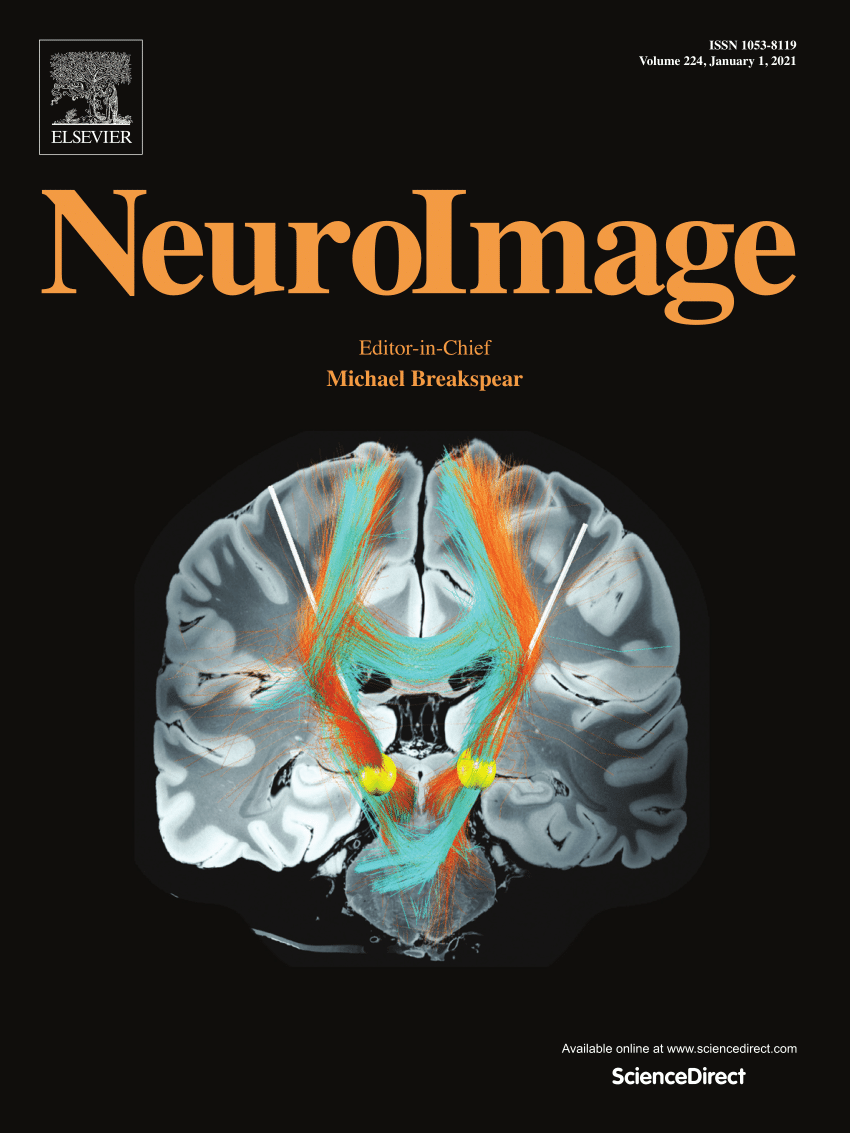Standardized low-resolution brain electromagnetic tomography does not improve EEG Alzheimer's disease assessment
IF 4.7
2区 医学
Q1 NEUROIMAGING
引用次数: 0
Abstract
Quantitative EEG has been shown to reflect neurodegenerative processes in Alzheimer's disease (AD) and may provide non-invasive and widely available biomarkers to enhance the objectivization of disease assessment. To address EEG's major drawback – its low spatial resolution – many studies have employed 3D source localization. However, none have investigated whether this complex mapping into 3D space actually adds value over standard surface derivation. In fact, we found no prior study – in any disease – that quantitatively compared the results of a 3D source localization method with those achieved by surface derivation. We analyzed data from one of the largest prospective AD EEG studies ever conducted (four study centers, 188 patients, 100 female). Thousands of distinct quantitative EEG markers of slowing, complexity, and functional connectivity were computed and regressed against disease severity, with rigorous control for multiple testing. We found highly significant associations between quantitative EEG markers and disease severity. However, standardized low-resolution electromagnetic tomography (sLORETA), a widely used 3D source localization method, did not improve results. Furthermore, a surface derivation marker (auto-mutual information of the left hemisphere during the eyes-closed condition) was the best performing marker across our entire sample. While our findings strongly support that quantitative EEG markers reflect neurodegenerative processes in AD, they do not demonstrate additional benefit from sLORETA. Importantly, our results are specific to AD and sLORETA. Therefore, they should not be generalized to other neurological or psychiatric disorders or to other 3D source localization methods without further validation. Finally, these findings do not diminish the value of 3D source localization for visual EEG inspection.
标准化低分辨率脑电磁断层扫描不能改善脑电图阿尔茨海默病的评估。
定量脑电图已被证明可以反映阿尔茨海默病(AD)的神经退行性过程,并可能提供无创和广泛可用的生物标志物,以增强疾病评估的客观性。为了解决脑电图空间分辨率低的主要缺点,许多研究采用了三维源定位。然而,没有人研究过这种复杂的3D空间映射是否真的比标准曲面派生增加了价值。事实上,我们没有发现任何先前的研究——在任何疾病中——将3D源定位方法的结果与表面推导方法的结果进行定量比较。我们分析了有史以来最大的前瞻性AD脑电图研究之一的数据(四个研究中心,188名患者,100名女性)。在严格控制多重测试的情况下,计算了数千种不同的脑电图定量标记物,包括慢速、复杂性和功能连通性,并根据疾病严重程度进行了回归。我们发现定量脑电图标记物与疾病严重程度之间存在高度显著的关联。然而,标准化低分辨率电磁层析成像(sLORETA),一种广泛使用的三维源定位方法,并没有改善结果。此外,表面衍生标记(闭眼条件下左半球的自动互信息)是我们整个样本中表现最好的标记。虽然我们的研究结果强烈支持定量脑电图标志物反映阿尔茨海默病的神经退行性过程,但它们并没有显示出斯洛雷塔的额外益处。重要的是,我们的结果是针对AD和sLORETA的。因此,未经进一步验证,不应将其推广到其他神经或精神疾病或其他3D源定位方法。最后,这些发现并没有降低三维源定位在视觉脑电图检查中的价值。
本文章由计算机程序翻译,如有差异,请以英文原文为准。
求助全文
约1分钟内获得全文
求助全文
来源期刊

NeuroImage
医学-核医学
CiteScore
11.30
自引率
10.50%
发文量
809
审稿时长
63 days
期刊介绍:
NeuroImage, a Journal of Brain Function provides a vehicle for communicating important advances in acquiring, analyzing, and modelling neuroimaging data and in applying these techniques to the study of structure-function and brain-behavior relationships. Though the emphasis is on the macroscopic level of human brain organization, meso-and microscopic neuroimaging across all species will be considered if informative for understanding the aforementioned relationships.
 求助内容:
求助内容: 应助结果提醒方式:
应助结果提醒方式:


